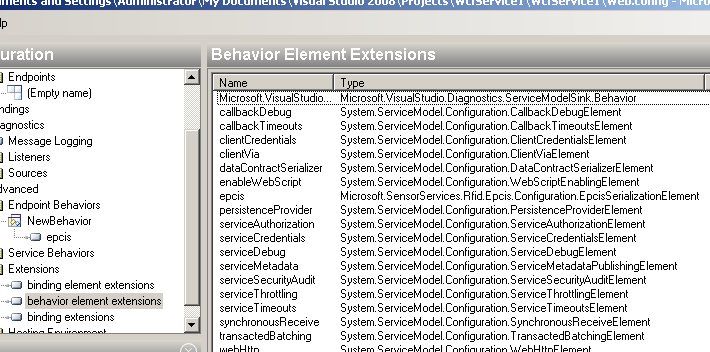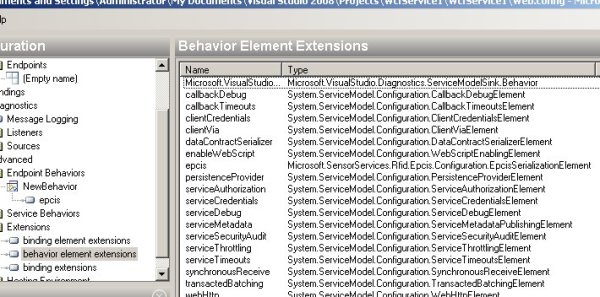I was looking around in BizTalk 2009 RTM trying to find new features that have been mostly undocumented and found one today! It looks like there is a new endpoint behavior that comes with the BizTalk 2009 RFID installer for use with RFID events. The WCF-Custom adapter properties does not really give you the ability to edit the endpoint’s array of events so I opened up a WCF Service Application to explore it more. The following blog post gives an example of how to build a WCF service that takes advantage of this new endpoint adapter: http://blogs.msdn.com/krishg/archive/2009/04/13/epcis-support-in-biztalk-rfid-2009-part-1.aspx. Here is a screenshot of the WCF Service Configuration Tool (it is right in the middle):

I did a little reading on the blog post mentioned above to find out that this endpoint behavior basically is like an event pipeline or event bus for working with RFID in a standards-based way. Previously, you could work with BizTalk RFID using an event-sinks approach and then connect the dots and add decision logic using the Business Rules Engine. Custom events with EPCIS can be implemented and exposed on a WCF service and called on the basis of a event chain based on device events or programmatic .NET code. One of the examples in the BizTalk RFID help file shows using REST behaviors to interact with the service that exposes EPCIS events. This is really interesting because it provides a way to interact over WCF events with the BizTalk RFID infrastructure. Since .NET 3.5 WCF services can be exposed from a WF, this development makes it a very interesting development because RFID-workflows could be created. I am still learning about the BizTalk RFID capabilities, but thought this was worth blogging on.
There seem to be some interesting new areas to learn about with the advances in BizTalk RFID provided with the 2009 release.
Thanks,

